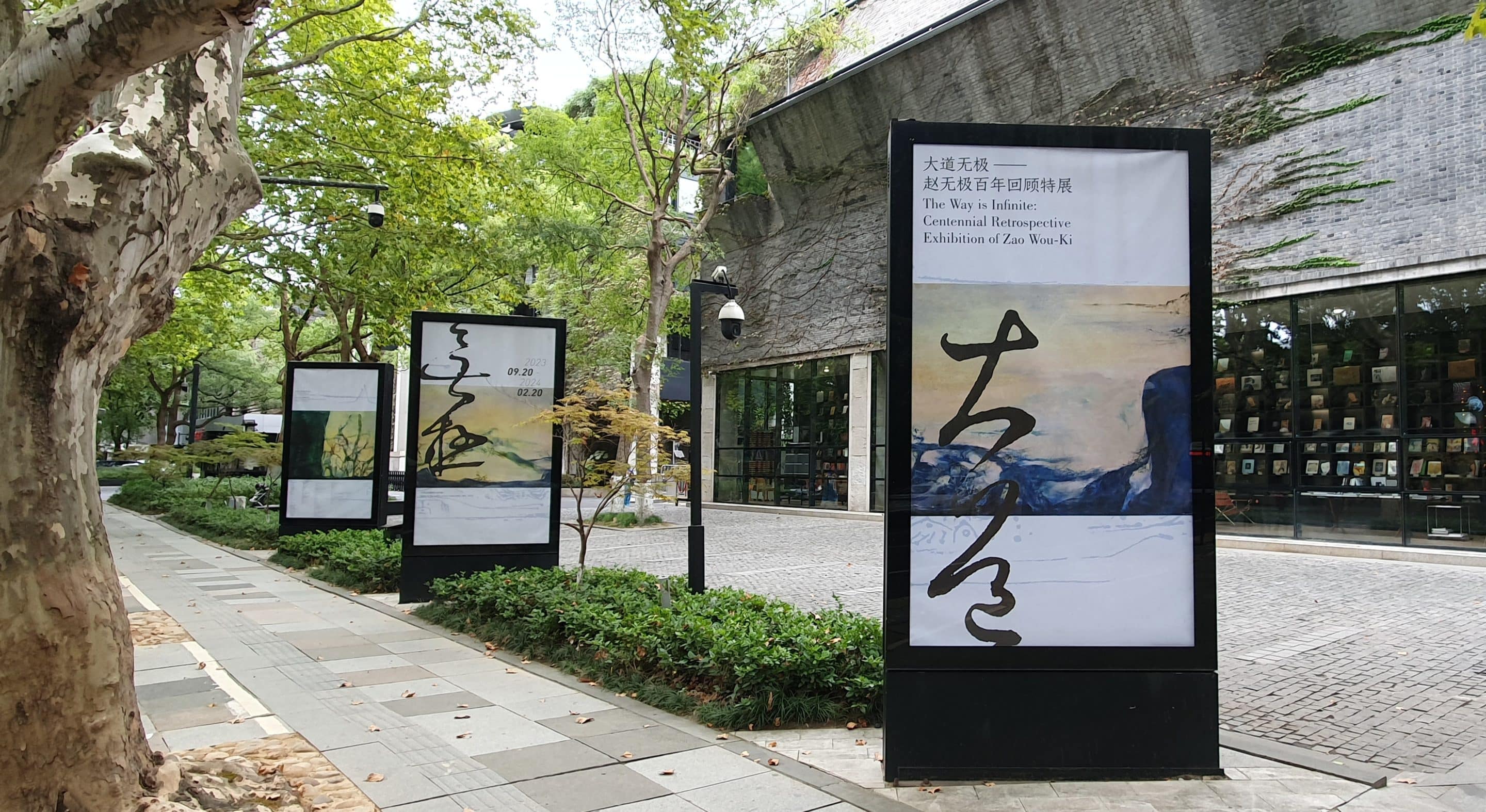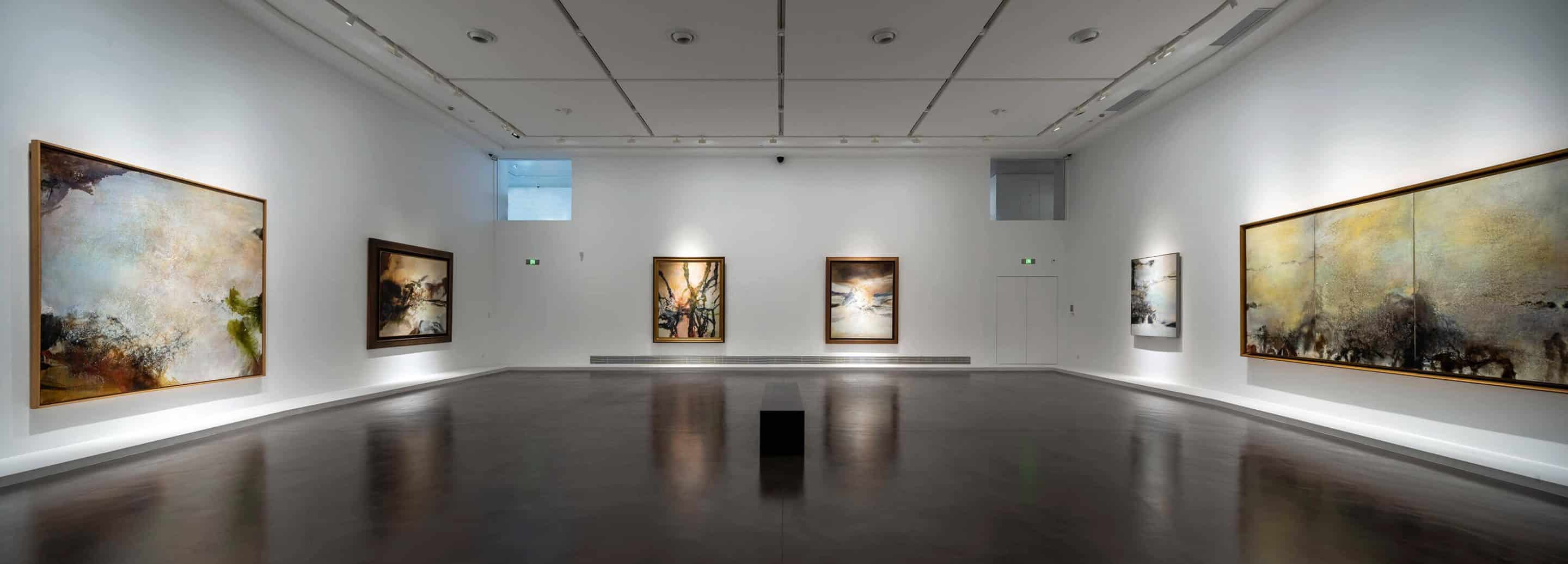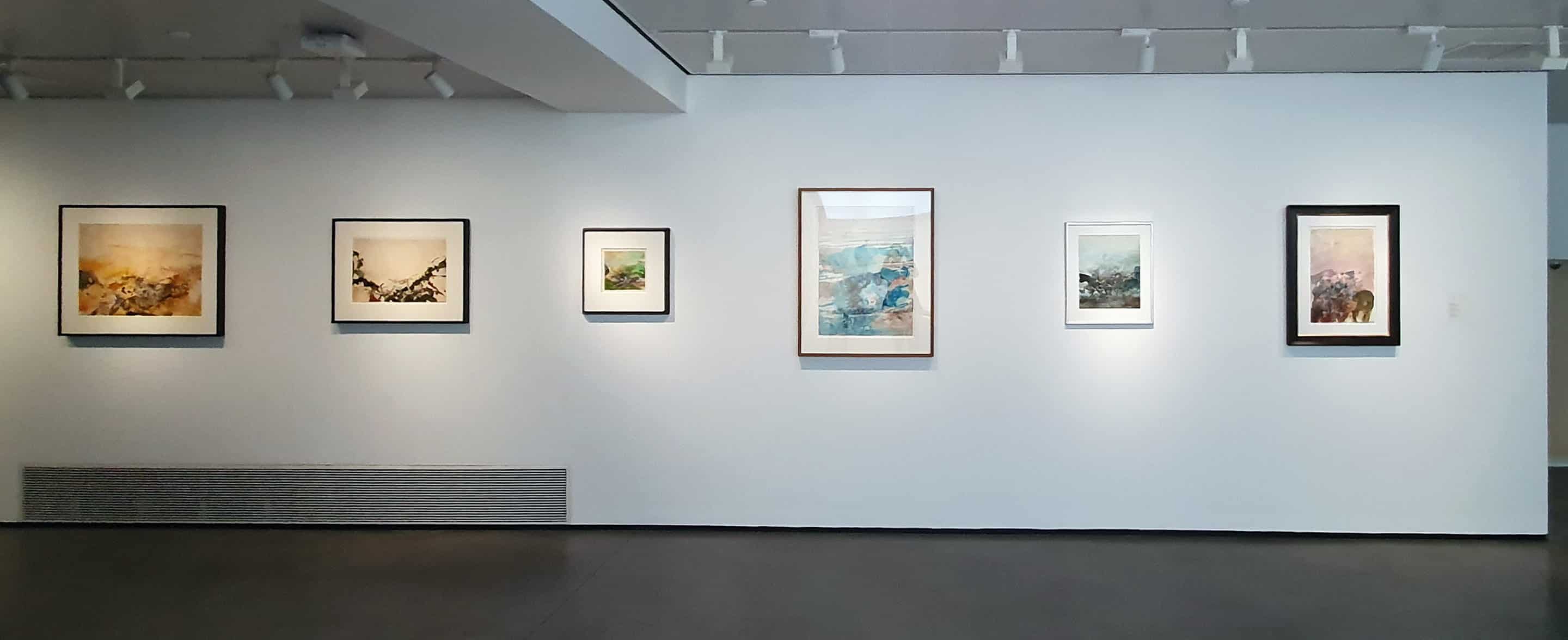
Past Exhibition 20.09.2023 - 20.02.2024
« The Way is Infinite: Centennial Retrospective Exhibition of Zao Wou-Ki » at the Art Museum of the China Academy of Art, Hangzhou (Zhejiang, Chine)
On September 20th 2023, a major retrospective of Zao Wou-Ki opened in Hangzhou, China, at the Art Museum of the China Academy of Art, where Zao Wou-Ki studied in the 1930s and was a teacher in the 1940s. Organized by the China Academy of Art and the Zao Wou-Ki Foundation, this exhibition is the first exhibition of such magnitude in mainland China, since the retrospective organized by Daniel Marchesseau at the Shanghai Museum, exactly 25 years ago.
The exhibition of the China Academy of Art presents more than two hundred works by the artist, including nearly one hundred and twenty oil paintings. It testifies to the evolution of the perception of Zao Wou-Ki and his work in China, which now considers him a particularly important link in 20th century art, both in China and in the world. Articulated in six sections, it includes oils on canvas, Indian inks, watercolors, porcelains as well as prints, within a chronological journey that reflects the full diversity, as well as the quality, of Zao Wou-Ki’s work.

View of the first room of the exhibition. All rights reserved
Starting with the very first works of the artist, while he still lives in China, the exhibition first traces the journey of Zao Wou-Ki from his native country, where he already combines the influence of Western painting (including Paul Cézanne) and Chinese tradition, until his arrival in Paris, where he settles in 1948. His constant visits to museums, his many trips through Europe, and the confrontation with the work of Paul Klee nourish his work. Inventing signs based on Chinese archaic signs, he abandons figuration around 1954.

View of the room dedicated to the period of the signs. All rights reserved
In the fall of 1957, he moves to New York for a few months. The discovery of American abstract painting comforts his choice of abstraction. After a few months in Hong Kong in early 1958, he returns to Paris. He is now represented by the Galerie de France in Paris and the Kootz Gallery in New York.

Paintings from the late 1950s and early 1960s. All rights Reserved
The room dedicated to paintings of the 1960s presents an exceptional group of paintings of these years, belonging to private collections and museums around the world. Large formats such as 13.02.67 (200 x 300 cm) illustrate the artist’s transition to a painting that stages space and movement.

View of the room dedicated to the 1960s. All rights reserved
On the advice of his friend Henri Michaux, the return to the Indian ink technique in the early 1970s brings the artist to modify his practice: in oil he seeks the liquid aspect of ink and rediscovers the importance of the void.

View of the room dedicated to the 1970s. All rights reserved
The exhibition benefits from significant loans of Indian inks by leading museum institutions such as the Graphic Art Cabinet of the National Museum of Modern Art in Paris, the Cernuschi Museum in Paris and the Suzhou Museum in China. The room dedicated to Indian inks from 1970 to 2004 offers a comprehensive overview of this technique so important for the artist.

View of the room dedicated to Indian inks. Photo Yann Hendgen
The exhibition then presents the very large formats of the 1970s to 2000s, including four triptychs: 15.01.82 – Triptych (195 x 390 cm), Homage to my friend Henri Michaux (1999-2000, 200 x 750 cm), Homage to Françoise – 23.10.2003 (195 x 324 cm) and 19.03.2006 – Triptych (195 x 291 cm).

View of the room dedicated to large formats with 15.01.82 – Triptych. All rights reserved
The last room dedicated to paintings emphasizes both the extreme richness of colors and the joy of painting of the last years of the artist. Faithful to the abstraction he has been practicing for more than fifty years, Zao Wou-Ki does not refuse brief returns to figurative motifs in his last paintings, whose plant-like brush strokes are also found in contemporary watercolors exhibited on the upper floor.

Last room dedicated to paintings. All rights reserved
The final section of the exhibition is dedicated to Zao Wou-Ki’s works on paper: watercolors, but also prints and illustrated books. We discover a parallel path to that of painting, with the first strictly figurative works, the passage through signs and finally the abstract watercolors. At the end of the route, the porcelain and the painted ceramic steles respond to the latest watercolors painted outdoors, while Zao Wou-Ki abandons oil painting.


Rooms dedicated to watercolors. Photo Yann Hendgen
Located in the School of Fine Arts where Zao Wou-Ki was a student, then a teacher, this retrospective exhibition has a special resonance, just ten years after the death of the artist. Recognized very late in his country of origin, Zao Wou-Ki had already initiated a similar exhibition project, unfortunately never completed, in 2004 with his wife Françoise,.
At the invitation of his former school, he also returned several times: in 1985 to teach there with Françoise, then in 2004, and some of his students’ works are also visible in an external part of the exhibition.
Taking advantage of this great retrospective and the new place it grants to the artist in Asia, the China Academy of Art dedicates a space to the biography of Zao Wou-Ki and to the archives that it has collected and studied, and that it reveals for the first time to the public : an important fund that unveils a fresh perspective on the life of the artist.

Biographical space in the basement of the exhibition. Photo Yann Hendgen
The exhibition The Way is Infinite is also part of the anniversary program of the sixty years of diplomatic relations between France and China. The French Embassy in Beijing has for the occasion accepted the loan of the canvas deposited in its premises by the National Center of Plastic Arts (07.04.80, 162 x 130 cm). This retrospective thus confirms the role of Zao Wou-Ki in the dialogue between these two cultures: drawing on their traditions, exploring the specificities and techniques of one and then of the other, Zao Wou-Ki was able to create a work that links these two visions in a unique artistic path.
